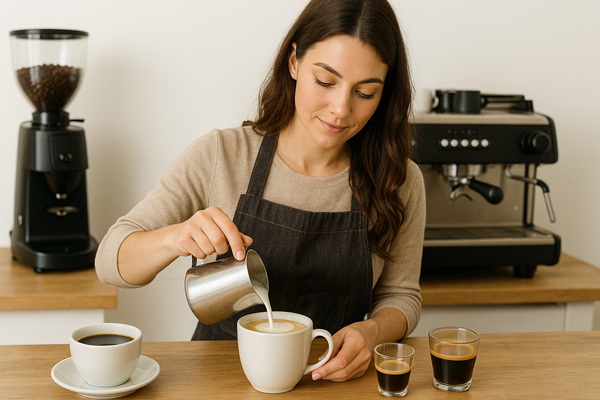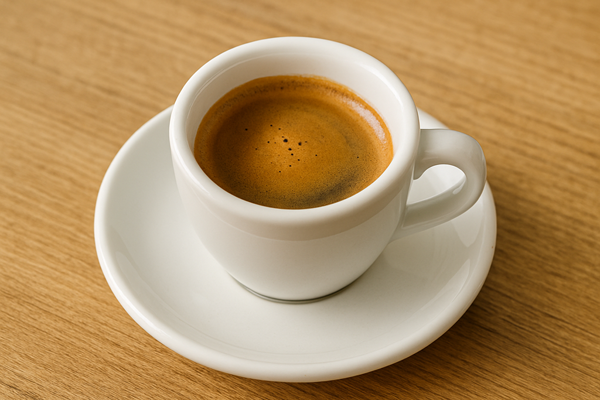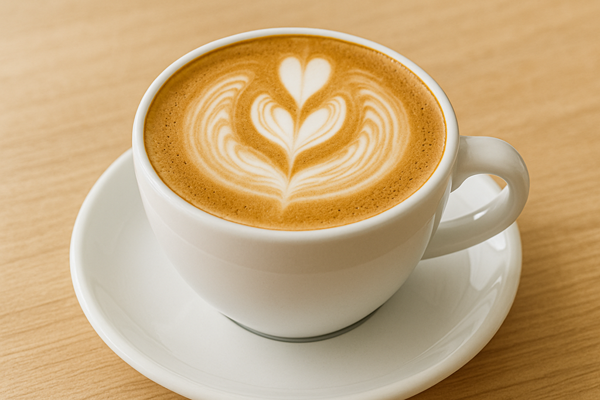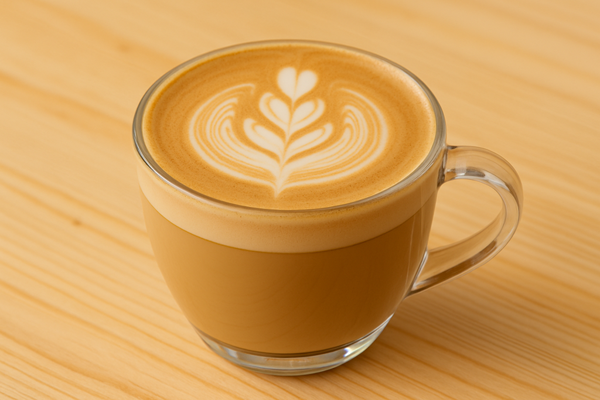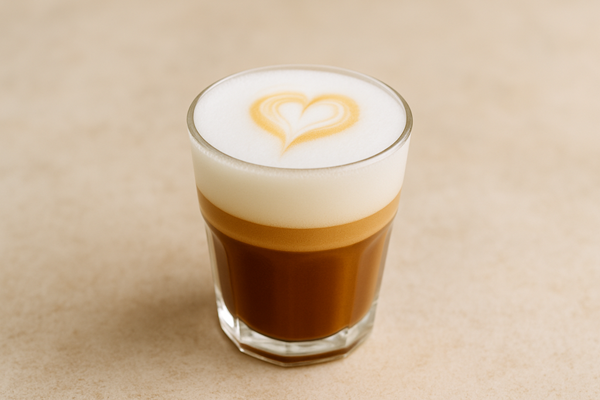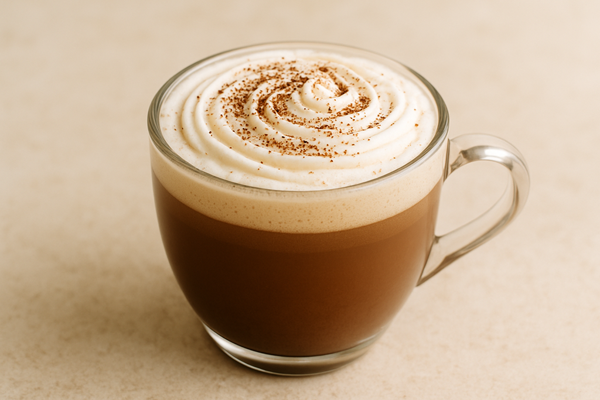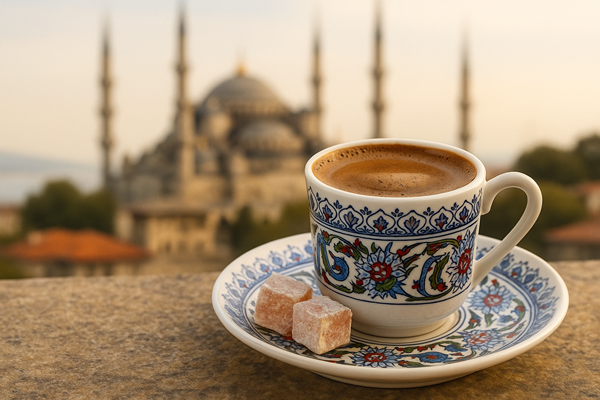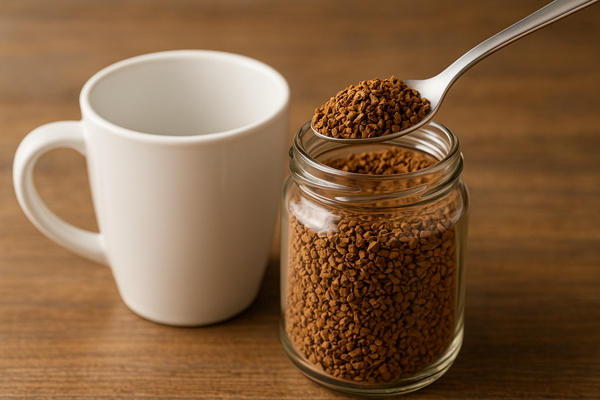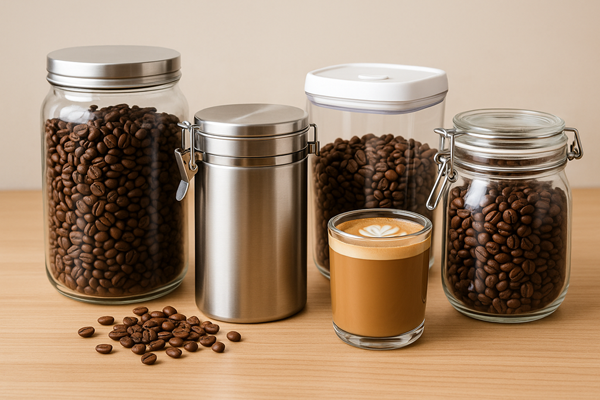What Is Coffee?
Coffee is a brewed beverage made from the roasted seeds of the Coffea plant. These seeds, known as coffee beans, are extracted from the fruit of the plant called the coffee cherry. The two primary species cultivated for consumption are Coffea arabica and Coffea canephora, commonly known as Robusta.
Once harvested, the beans are separated from the cherry, dried, and roasted at high temperatures to develop their characteristic flavor. These roasted coffee beans are then ground and brewed with hot water, producing a beverage rich in soluble compounds responsible for its distinctive taste and stimulating effects, largely due to its caffeine content.
Coffee preparation varies widely across cultures and methods, influencing both flavor and intensity. Decaffeinated coffee is made by removing most of the caffeine from green beans before roasting. Popular methods include the Swiss water process and solvent-based extraction techniques, which aim to preserve flavor while significantly reducing caffeine.
Types of Coffee Beans
The four main types of coffee beans are Arabica, Robusta, Liberica, and Excelsa. Each bean variety belongs to a species of the Coffea plant and offers unique traits in terms of flavor, caffeine content, and cultivation environment.
- Arabica (Coffea arabica) is grown at high elevations in cooler climates. These beans are smooth, mildly acidic, and aromatic. They represent 60–70% of global coffee production and contain lower levels of caffeine.
- Robusta (Coffea canephora) is cultivated at lower altitudes and is more resistant to pests. It has a stronger, more bitter taste and significantly higher caffeine content, making it common in espresso blends and instant coffee.
- Liberica (Coffea liberica) is a less common variety found mostly in Southeast Asia. It produces large beans with a woody flavor and floral aroma, contributing boldness to niche blends.
- Excelsa (Coffea excelsa) is often treated as a subtype of Liberica. It offers tart, fruity notes and adds depth and complexity when used in specialty coffee blends.
The table below compares the flavor, caffeine content, typical growing altitudes, and common uses of major coffee bean types:
| Bean Type | Flavor | Caffeine Content | Typical Growing Altitude | Usage |
|---|---|---|---|---|
| Arabica | Sweet, floral, aromatic | Low (1.2–1.5%) | High (1,200–2,000 m) | Specialty brews, black coffee |
| Robusta | Bitter, earthy, strong | High (2.2–2.7%) | Low (sea level to 800 m) | Espresso, instant coffee |
| Liberica | Woody, smoky, floral | Moderate | Varies | Niche blends, Southeast Asian markets |
| Excelsa | Tart, fruity, complex | Moderate | Low to medium | Blend enhancer |
Coffee Brewing Methods
Coffee brewing refers to the process of extracting flavor compounds from ground coffee using water. Brewing methods determine coffee strength, clarity, and mouthfeel. Each technique uses specific equipment and is influenced by variables such as grind size, water temperature, and extraction time.
Brewing methods and their associated equipment can be grouped into four main types based on how they extract flavor:
1. Immersion Methods
- French Press immerses coarse grounds in hot water and uses a plunger to separate them, resulting in full-bodied coffee.
- Cold Brew Makers steep coarse grounds in cold water for extended periods, producing a smooth, low-acid brew.
2. Filtration Methods
- Pour Over (such as the V60) uses a paper filter and gravity to extract clear, bright coffee from medium-fine grinds.
- Drip Coffee Makers automate the pour-over process by using hot water and gravity to produce filtered coffee with minimal manual input.
3. Pressure-Based Methods
- AeroPress uses air pressure to push water through fine grounds, offering a quick, clean brew with low acidity.
- Espresso Machines extract concentrated coffee under high pressure, creating a rich shot with thick crema.
- Moka Pots use steam pressure to force water through grounds, producing a strong, stovetop-style brew.
- Percolators cycle boiling water repeatedly through coffee grounds, often yielding a strong and bitter profile.
4. Cold Extraction Methods
- Cold Brew uses time rather than heat to extract flavor from coarse coffee grounds. This method involves steeping grounds in cold water for 12 to 24 hours, producing a smooth, low-acid brew that is often served chilled.
Common Coffee Drinks
The following coffee drinks are among the most popular globally and vary by preparation method, milk content, and strength.
- Espresso is a concentrated shot of coffee made by forcing hot water through finely ground coffee under high pressure. It forms the base for many other coffee drinks and is characterized by a rich crema and bold flavor.
- Cappuccino is made with equal parts espresso, steamed milk, and milk foam, resulting in a balanced, creamy drink with a velvety texture.
- Latte combines a single or double espresso shot with a larger quantity of steamed milk and a thin layer of foam, offering a milder coffee flavor.
- Macchiato consists of a shot of espresso topped with a small amount of milk foam, retaining a strong espresso taste with slight smoothness.
- Flat white uses microfoamed milk to create a smooth, velvety texture over a double espresso shot, emphasizing the coffee's intensity.
- Mocha blends espresso, steamed milk, and chocolate syrup, typically topped with whipped cream, making it a sweet and rich beverage.
- Affogato is a dessert-style drink where a shot of hot espresso is poured over a scoop of vanilla ice cream, blending bitterness and sweetness.
- Frappé, originally from Greece, is a foam-covered iced coffee made by shaking instant coffee, water, and sugar, often served with milk or cream.
- Vietnamese iced coffee uses strong dark-roasted Robusta coffee brewed with a metal drip filter and poured over sweetened condensed milk and ice.
- Irish coffee combines hot coffee, Irish whiskey, sugar, and a layer of thick cream on top, served warm as both a drink and dessert.
The History of Coffee
Coffee traces its origins to the Ethiopian Highlands, where the legendary figure Kaldi, a goatherd, is said to have discovered its stimulating effects after noticing his goats became energetic from eating coffee cherries. This myth marks the symbolic beginning of coffee’s cultural history.
From Ethiopia, coffee spread to Yemen, where Sufi monks brewed it to maintain alertness during extended prayer. By the 15th century, Yemeni traders introduced coffee to the wider Arabian Peninsula through the port city of Mokha. Coffee gained prominence across Islamic regions, with early coffeehouses appearing in Mecca, Cairo, and Constantinople.
In the 17th century, coffee reached Europe through Venetian merchants. It quickly became popular in cities like London and Paris, where coffeehouses became intellectual and political hubs. The mystic Baba Budan is credited with smuggling coffee seeds from Yemen to India, initiating cultivation in Mysore.
Coffee’s global expansion accelerated under European colonialism, leading to plantation systems in Brazil, the Caribbean, and Southeast Asia. It reached the Americas, where events like the Boston Tea Party helped solidify coffee as a symbol of resistance and independence. These milestones helped establish coffee as a major global commodity.
Coffee Production
Brazil is the world’s leading coffee producer, followed by Vietnam, Colombia, and Indonesia. These countries lie within the coffee belt, a tropical region spanning the Tropic of Cancer to the Tropic of Capricorn. This zone offers optimal altitude, rainfall, and temperature for large-scale coffee cultivation.
The coffee industry is economically vital in many producing countries, supporting millions of smallholder farmers. Cultivation practices vary: shade-grown coffee is grown under tree canopies and offers ecological advantages such as biodiversity conservation and carbon sequestration. In contrast, sun cultivation focuses on yield but can degrade soil and disrupt local ecosystems.
Coffee exports are processed, graded, and traded on international commodity markets. Sustainability certifications like Rainforest Alliance and Fairtrade help promote ethical labor, environmentally responsible farming, and transparent sourcing across the global supply chain.
Bioactive Compounds in Coffee
Caffeine is the most studied psychoactive compound in coffee. It functions as a central nervous system stimulant by blocking adenosine receptors in the brain. This leads to increased alertness, reduced fatigue, and improved cognitive performance.
Coffee also contains chlorogenic acid, a polyphenol with antioxidant and anti-inflammatory properties. This compound contributes to the bitter taste of coffee and may influence glucose metabolism and cardiovascular health.
Two diterpenes - cafestol and kahweol - are lipid-soluble compounds found in unfiltered coffee. These molecules can elevate LDL cholesterol levels when consumed in large amounts, particularly through French press or boiled brewing methods.
Additional methylxanthines in coffee include theobromine and theophylline, both chemically related to caffeine. These compounds exhibit milder stimulant effects and contribute to the overall physiological response to coffee.
The chemical composition of coffee varies based on species, roast level, and preparation method. The interaction of these bioactive compounds influences mood, metabolism, and long-term health outcomes.
Health Benefits of Coffee Consumption
Moderate coffee intake has been linked to a variety of health benefits. Clinical studies suggest that consuming 3-4 cups per day may reduce the risk of chronic diseases such as Type 2 diabetes, Parkinson’s disease, and several forms of cancer, including liver cancer and endometrial cancer.
These effects are attributed to coffee’s bioactive compounds, which offer antioxidant, anti-inflammatory, and neuroprotective properties. Filtered coffee, in particular, is associated with improved metabolic markers and does not significantly impact cholesterol levels.
Overall, moderate coffee consumption appears to support longevity, metabolic health, and reduced risk of age-related diseases when integrated into a balanced diet.
Health Risks of Coffee and Caffeine
While coffee has many benefits, excessive intake of caffeine - generally defined as more than 400 mg per day - can lead to adverse effects. These include insomnia, increased heart rate, digestive discomfort, and anxiety.
Some individuals are more sensitive to caffeine and may experience symptoms at lower doses. Pregnant individuals are advised to limit intake to no more than 200 mg per day to minimize risks to fetal development.
Coffee’s impact on cardiovascular health can vary. While filtered coffee has minimal effect on cholesterol, unfiltered coffee may increase LDL levels due to its diterpene content, including cafestol and kahweol.
Roast Levels
The following roast levels determine coffee’s acidity, bitterness, and flavor intensity.
- Light roast coffee preserves the original flavor profile of the bean, showcasing floral, fruity, and acidic notes. It has the highest caffeine content and light brown color.
- Medium roast offers a balance between origin flavor and roasted notes. It has moderate acidity, body, and caffeine levels, making it the most popular roast globally.
- Medium-dark roast introduces deeper caramelization, resulting in reduced acidity and increased bitterness. It has a fuller body and darker appearance.
- Dark roast features dominant roasted and smoky flavors with minimal acidity. It often masks the bean's origin characteristics and is typically used in espresso blends.
Frequently Asked Questions About Coffee
What is coffee made from?
Coffee is made from roasted seeds of the coffee cherry, a fruit produced by the Coffea plant. These seeds, known as coffee beans, are typically from two main species: Coffea arabica and Coffea canephora (Robusta). The beans undergo processing, roasting, and grinding before being brewed into the beverage consumed worldwide. Each stage of this process influences the chemical composition, flavor, and caffeine content of the final drink.
Where did coffee originate?
Coffee originated in the Ethiopian Highlands, where the Coffea arabica plant is native. According to legend, a goatherd named Kaldi discovered coffee’s stimulating effects after observing his goats eating coffee cherries. From Ethiopia, coffee spread to Yemen, where Sufi monks used it during prayer. Yemen became a central hub for early coffee cultivation and trade, particularly through the port of Mokha, facilitating coffee’s expansion throughout the Islamic world and eventually to Europe and the Americas.
Is coffee technically a fruit or a bean?
Coffee is botanically classified as a fruit. The coffee bean is actually the seed inside the coffee cherry, which is a type of stone fruit. While the term "bean" is used colloquially due to the seed’s shape, coffee is not a legume. Each cherry typically contains two seeds, which are processed and roasted to produce the beverage known as coffee.
How is coffee decaffeinated?
Coffee is decaffeinated through several processing techniques designed to remove most of the caffeine from green, unroasted beans while preserving flavor. The most common methods include:
- Swiss Water Process: This chemical-free method uses pure water and osmosis to extract caffeine from the beans. It is often preferred for organic or natural labeling.
- Solvent-Based Methods: These approaches use selective solvents such as methylene chloride or ethyl acetate to dissolve caffeine. The beans are then rinsed to remove the solvents, with minimal impact on flavor.
- CO₂ Extraction: This method applies pressurized carbon dioxide to separate caffeine molecules. It is efficient and preserves most of the bean’s original taste and aromatic compounds.
Each decaffeination method aims to retain the coffee’s sensory profile while significantly reducing its stimulant content. The result is a decaffeinated coffee product that retains much of its original character.

